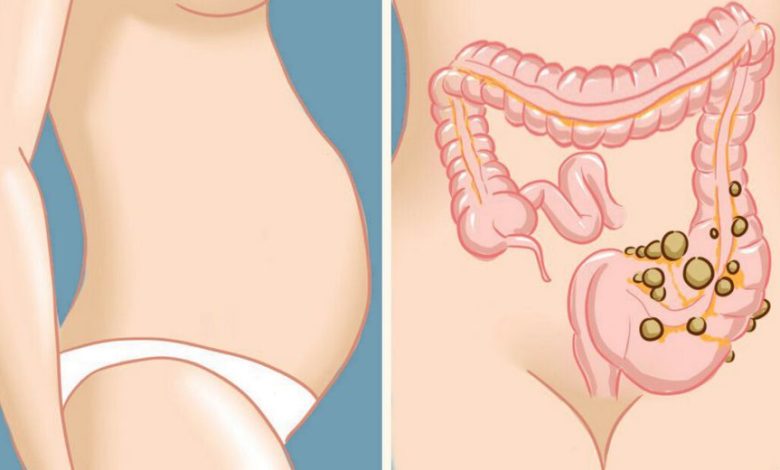Tumors and formations of the abdominal organs: What's it, symptoms, diagnostics, treatment, prevention

Synonyms: Abdominal mass; Tumors and formations of the abdominal organs
Abdominal mass; Mass in the abdomen
What are tumors and formations of the abdominal organs
Tumors and formations of the abdominal organs can be of various origins., often located outside the organs in the retroperitoneal space. They may be benign, as well as malignant, which are extremely rare. These formations in the abdominal cavity are characteristic of people aged 50 and older.
Abdominal masses are most often found during a routine physical examination.. Most of the time they develop rather slowly.. Maybe, you can't feel it on your own.
Area detection, in which pain is felt, help the doctor make a diagnosis. For Example, the abdomen can be divided into four regions:
- Right upper quadrant
- Left upper quadrant
- Right lower quadrant
- Left lower quadrant
Other terms, used to determine the localization of abdominal pain or neoplasms, include:
- Epigastrium is the center of the abdomen just below the ribcage.
- The umbilical region is located around the navel
Location of education, its density, texture and other qualities may point to its cause.
Causes of formations in the abdominal cavity
Some of the diseases, which may cause them to appear.:
- An abdominal aortic aneurysm can cause a pulsatile mass around the umbilicus.
- Distension of the bladder (urinary bladder, engorged) may cause a lump in the center of the lower abdomen above the pelvic bones. In extreme cases, it can reach to the navel..
- Cholecystitis can cause a very painful mass, which is felt under the liver in the right hypochondrium (sometimes).
- Colon cancer can cause swelling almost anywhere in the abdomen..
- Crohn's disease or intestinal obstruction can cause many painful sausage-like masses anywhere in the abdomen..
- Diverticulitis can cause mass, which is usually located in the lower left quadrant.
- A gallbladder tumor can cause a painful, irregular mass in the right hypochondrium.
- Hydronephrosis (fluid-filled kidney) may cause smooth, spongy-looking mass on one or both sides or back (side area).
- Kidney cancer can sometimes cause swelling in the abdomen.
- Liver cancer can cause a hard lumpy mass in the right upper quadrant.
- Increase in liver (gepatomegaliya) may cause a firm, uneven mass under the right chest or left side of the stomach.
- Neuroblastoma, cancer tumor, often found in the lower abdomen, can cause formation (this cancer mostly occurs in children and infants).
- An ovarian cyst can cause a smooth, round, elastic mass over the pelvis in the lower abdomen.
- A pancreatic abscess can cause a neoplasm in the upper abdomen in the epigastric region.
- A pancreatic pseudocyst may cause a lumpy mass in the upper abdomen in the epigastric region.
- Renal cell carcinoma can cause smooth, solid, but not a painful mass near the kidney (usually affects only one kidney).
- Splenomegaly (splenomegaly) can sometimes be felt in the left upper quadrant.
- Stomach cancer can cause swelling in the left upper abdomen in the stomach area (epigastrium), if the cancer is extensive.
- Leiomyoma of the uterus (myoma) may cause a round, lumpy mass to form over the pelvis in the lower abdomen (sometimes you can feel it, if the fibroid is large).
- Intestinal volvulus can cause formation anywhere in the abdominal cavity.
- Obstruction of the ureteropelvic junction may cause neoplasm in the lower abdomen.
What can be done at home with formations in the abdominal cavity
The health worker should examine all neoplasms in the abdominal cavity as soon as possible..
Changing body position can help relieve pain.
When to See a Healthcare Professional for Abdominal Lumps
Seek immediate medical attention, if you feel a throbbing lump in your stomach or chest along with severe pain. This could be a sign of a ruptured aortic aneurysm., which is deadly.
Contact your doctor, if you notice any mass in the abdomen.
What will the doctor do when examining the formation of the abdominal organs
In non-emergency situations, the doctor will conduct a physical examination and ask questions about symptoms and medical history.
In an emergency, you will be taken to the hospital. The doctor will then examine the abdomen and ask questions about symptoms and medical history., eg:
- Where is the formation in the abdomen?
- When you noticed him?
- It appears and disappears?
- Does the formation change location and size over time?
- What other symptoms do you have?
In some cases, a pelvic or rectal examination may be required. Tests, who may be assigned, to find the cause of formations, may include:
- CT of the abdomen
- Abdominal ultrasound
- X-ray of the abdomen
- Angiography
- Barium enema
- Blood tests, such as complete blood count and biochemical blood test
- Colonoscopy
- FGDS
- Isotopic research
- Sigmoidoscopy
Sources
- Ball JW, Dains JE, Flynn JA, Solomon BS, Stewart RW. Abdomen. In: Ball JW, Dains JE, Flynn JA, Solomon BS, Stewart RW, eds. Seidel’s Guide to Physical Examination. 9th ed. St Louis, MO: Elsevier; 2019:chap 18.
- Landmann A, Bonds M, Postier R. Acute abdomen. In: Townsend CM Jr, Beauchamp RD, Evers BM, Mattox KL, eds. Sabiston Textbook of Surgery. 21st ed. St Louis, MO: Elsevier; 2022:chap 46.
- McQuaid KR. Approach to the patient with gastrointestinal disease. In: Goldman L, Schafer AI, eds. Goldman-Cecil Medicine. 26th ed. Philadelphia, PA: Elsevier; 2020:chap 123.
